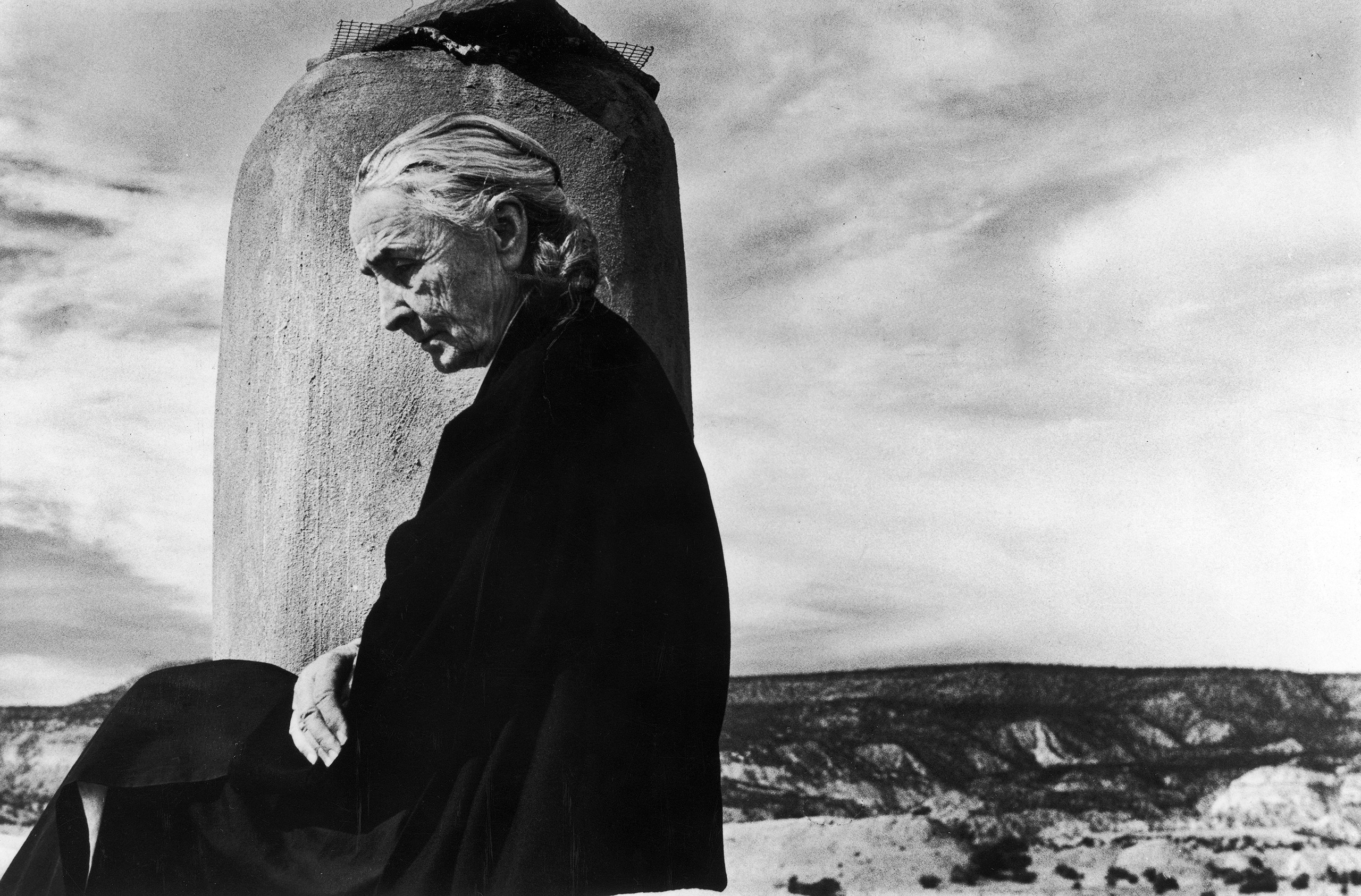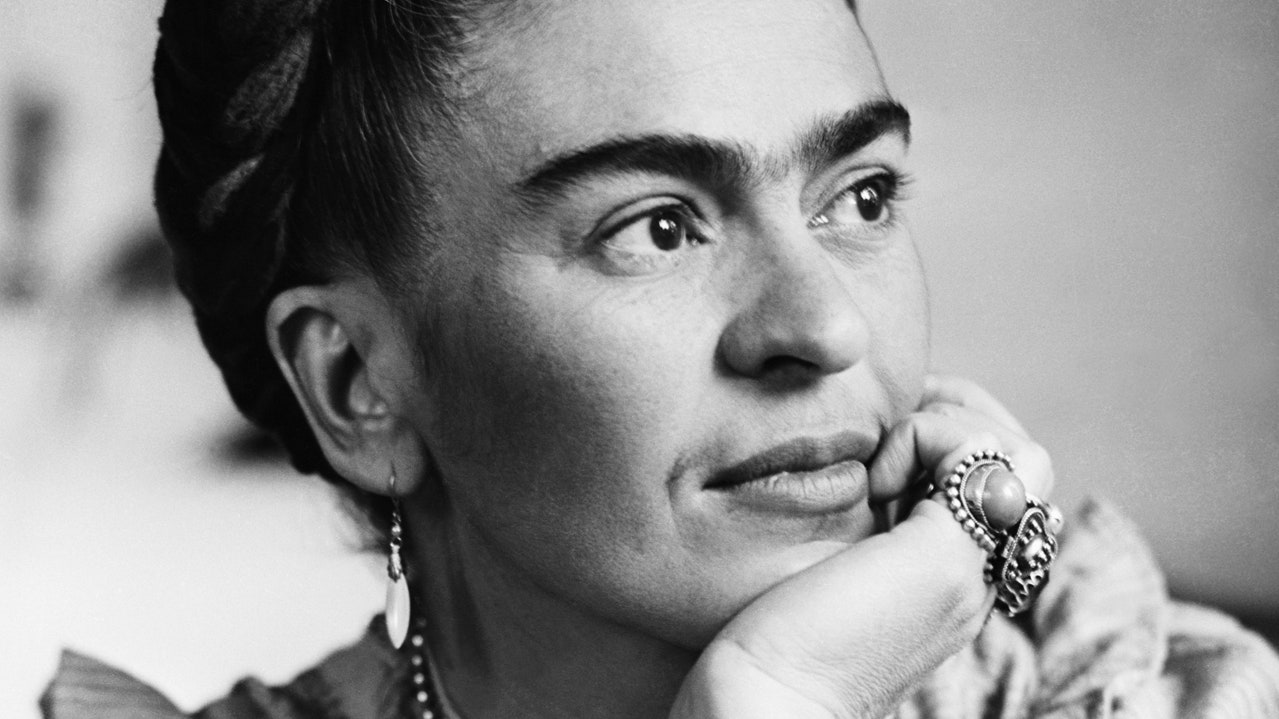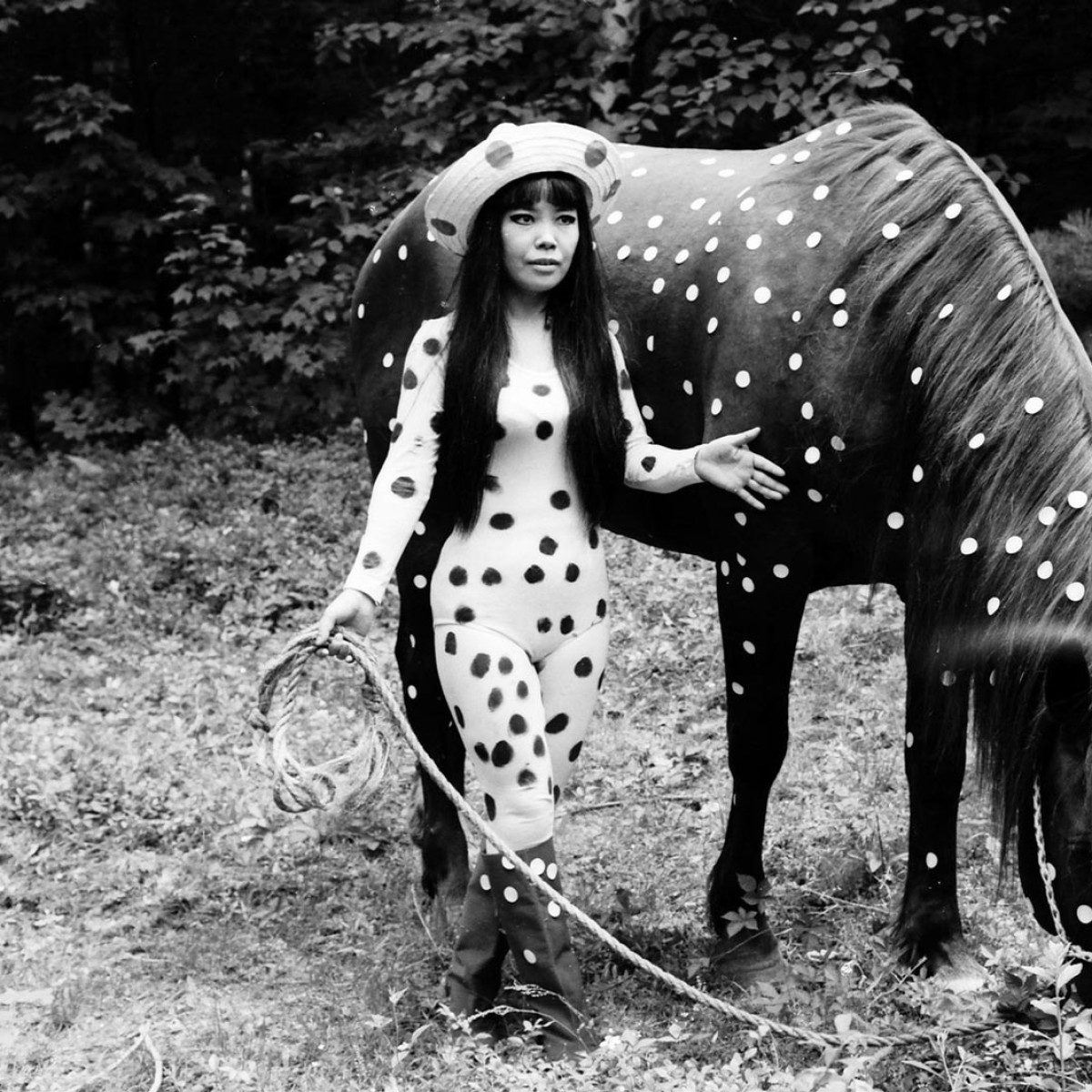
I once met Georgia O’Keeffe. This was not easy to do, and I considered it an achievement.
It was in the early nineteen-seventies, when I was in my early twenties. I
was working at Sotheby’s, in New York, in the American paintings
department. One of the things I did there was catalogue the works that we
sold. I held each picture in my hands, felt its shape and weight. I
measured and described it, recording the medium, condition, signature. The
date. The provenance and exhibition history. I came to know the works very
well.
During this time I had begun to write about American art. I was
particularly interested in the modernists, those early-twentieth-century
artists who were part of the rising tide of abstraction. I wrote about
different members of this group—Marsden Hartley, Arthur Dove. I wanted to
write about O’Keeffe, but this was difficult. She held the copyright to
many of her paintings, so it was necessary to ask permission from her in
order to reproduce them. This was one reason that relatively little
scholarship had appeared on her: How could you write a book about art
without using images? Another reason was the confusion that permeated
critical response to her work until well into the sixties. All those
flowers! Was she a great artist or a cheap sentimentalist? The work was so
easy to like—could it be important? She was scorned by the guys, and, if
you wanted to be taken seriously as a scholar, it seemed risky to write
about her.
Another reason for the paucity of writing about O’Keeffe was her own
inaccessibility. She lived in a small village in rural New Mexico and
rarely gave interviews. Seclusion and withholding were part of her
persona. She was not interested in publicity, and it is said that she once
refused a request for a one-person show at the Louvre. Here was a paradox:
the work, so intimate and engaging, even accessible, and the artist, so
remote and self-controlled, clothed in severe black and white. The mystery
gave O’Keeffe a kind of charged glamour. A sighting was a significant
event.
That season, Sotheby’s had received an O’Keeffe painting of Canadian
barns. It had been done in the early nineteen-thirties: two dark gray
buildings in a wintry landscape. I catalogued it, and asked Doris
Bry—O’Keeffe’s private agent, who had once been the assistant to Alfred
Stieglitz, O’Keeffe’s former husband—for information on it. Later she
called me. “Mrs. Alger,” she said (for that was my name then), “this is
Doris Bry.” Of course I knew who it was. She had a dry, gravelly voice,
very distinctive, with a Waspy drawl. “I’m calling about the painting of
Canadian barns.”
“Yes, Miss Bry.” I used my formal, fluty, professional tone. “How may I
help you?”
“I’d like to have the painting brought over to my apartment.”
Doris Bry lived in an apartment in the Pulitzer mansion. This was a grand
Beaux-Arts building, only a few blocks away from our offices on Madison
Avenue. But it didn’t matter how close she was. “I’m so sorry, Miss Bry,”
I said, “but our insurance policies don’t permit the works to leave the
premises until they have legally changed hands. If you’d like to bring
someone in to see the painting, I’ll be happy to have it brought out to
the viewing room and put up on the easel. But I can’t allow the painting
to leave our property.”
“Mrs. Alger,” Miss Bry said, “the artist is here. She would like to see
the painting.”
“I’ll be there in ten minutes,” I said, in my normal voice.
I called storage to have the painting brought out. I had it under my arm
and was walking down the hall on my way to the front door when I ran into
my boss.
“What are you carrying?” he asked.
“Canadian barns,” I said, putting a hand over the frame protectively.
“Where are you going?” he asked. “It can’t leave the premises.”
“The artist wants to see it,” I said.
My boss put out his hand. “I’ll take it.”
“I answered the phone,” I said. “I’m taking it.”
With the painting under my arm, I walked down Madison Avenue to the
Pulitzer mansion. Doris Bry ushered me into her apartment. She was a tall,
stately woman, rather ponderous. She had dark eyes, pale, lightless skin,
and a mass of short gray curls. She brought me into the living room, where
there were three other people—two lawyers in dark suits and an older
woman. Bry introduced me.
“This is Mrs. Alger, from Sotheby’s.” The woman nodded pleasantly but said
nothing. She was much smaller than I, which surprised me. She had a lined
face, dark, hooded eyes, and long silvery hair coiled into a low bun. She
wore a gray cotton housedress with a white collar and a narrow self-belt.
On her feet, she wore flat black Chinese slippers, with straps across the
insteps.
Everyone watched as I carried the painting across the room and set it on
the easel. The small woman came with me, but Bry and the lawyers stood at
the back of the room, talking. Georgia O’Keeffe and I stood in front of
the painting. She looked quietly at the canvas, as though it were part of
her, as if she were alone with it.
I stood silently beside her. But that wasn’t enough. When people meet
someone famous, often they want to inflect themselves upon the moment, to
impose their own identities upon that of the famous person. They say, “I
grew up in your town,” or, “I have that same scarf,” or, “I met you once
in a train station.” It’s a hopeless venture.
“I hope you like the frame,” I said. I had ordered it myself. It was a
simple silver half clamshell, the kind that Arthur Dove had used. I knew
O’Keeffe had liked Dove and had admired his work. I knew she’d like the
frame. She’d be grateful. This was my moment.
She answered without turning. “I like them best without frames.”
I said nothing more. She stood looking at the painting, calm and utterly
self-possessed. I think she was wearing a black sweater, a thin little
cardigan, not buttoned up.
She’d have been in her early eighties then.
Nearly twenty years later, in the spring of 1986, I was living in northern
Westchester County. We had moved there ten years earlier, my family and I.
We were out in the country, in an old farmhouse with a big barn and some
fields. Living with us were four or five horses, two or three dogs, and
some large cats. My daughter was fourteen. I had left the art world.
One evening, my husband, Tony, came home from the city and found me in the
kitchen. He was in his business suit, still carrying his briefcase.
“I have something to tell you,” he said. On the train coming out, he’d sat
next to a friend of ours, Edward Burlingame, who was the editor-in-chief
and publisher at Harper & Row. Edward had said, “Georgia O’Keeffe has just
died, and there isn’t a big biography of her. Who do you think we should
ask to write it?”
— Roxana Robinson for The New Yorker, excerpt

Legendary artist Frida Kahlo spent most of 1950 in a hospital bed in
Mexico City, recovering from a series of spinal surgeries. Her
recuperation involved bed rest, during which her torso was immobilized in
a heavy plaster cast. In a telling contemporary photograph of the painter
and future global feminist icon, she is propped up against her pillows,
embellishing the front of her latest plaster corset with the aid of a hand
mirror and a tiny brush. Her pointy nails are lacquered with dark polish.
Her center-parted hair is pulled back neatly. A pile of satin ribbons and
flowers adorns the crown of her head. She sports dangly earrings, chunky
rings on every finger, and a pair of bracelets.
Regardless of the degree to which she was suffering, Frida Kahlo always
enjoyed the spectacle of herself. She was a playful exhibitionist, a
fervid and erotic provocateur dispatching updates from the land of female
suffering. It was part of what made her difficult: She forced people to
look at her, to share her feelings, when they would prefer to look away.
Magdalena Carmen Frieda Kahlo y Calderón was born in Coyoacán, a tidy
suburb of Mexico City, in July 1907. Until the day Frida (she dropped the
“e” in 1922) was hit by a streetcar—literally, at the age of 18—nothing in
her upper-middle-class background would disclose her future: that she
would one day become Mexico’s most celebrated painter, a sexy
international art megastar and pop icon who would produce unnerving
masterpieces that would hang in the world’s major museums. Or that she
would “enjoy” a passionate, tumultuous marriage to Mexico’s most famous
muralist and womanizer, Diego Rivera. Frida and Diego married for the
first time in 1929, divorced in 1939, remarried in 1940, and remained wed
until Frida’s untimely death in 1954, at the age of 47. Years after both
artists were dead, a travel squib appeared in the New York Times, which
included the sentence: “Though they created some of Mexico’s most
fascinating art, it’s the bizarre Beauty-and-the-Beast dynamic that has
captivated the world and enshrouded both figures in intrigue.”
— National Geographic, excerpt

WASHINGTON — The exhibition “Yayoi Kusama: Infinity Mirrors” at the
Hirshhorn Museum is great fun if you like to be dazzled by rooms whose
mirrored interiors create countless, ever-diminishing reflections of
themselves and anything in them. And who doesn’t?
The exhibition “Yayoi Kusama: Infinity Mirrors” at the Hirshhorn Museum is
great fun if you like to be dazzled by rooms whose mirrored interiors
create countless, ever-diminishing reflections of themselves and anything
in them. And who doesn’t?
Ms. Kusama, who was born in Japan in 1929, made her first Infinity Mirror
room, “Phalli’s Field,” in New York in 1965, filling the 15-square-foot
floor of a mirrored space with hundreds of her signature stuffed phalli,
or tubers, covered in red-on-white polka-dot fabric. The effect was
glorious, beguiling. And still is: “Phalli’s Field” is the first mirrored
environment in the Hirshhorn show. Step into it and you enter another
world, an eye-popping garden of benign cactuses spreading out in all
directions, or an underwater wonderland of coral or sea anemones.
Over the past several decades, “Phalli’s Field” and the 19 other mirrored
rooms Ms. Kusama has made since have established her as a beloved figure.
Crowds line up around the block to enter her rooms, one person at a time;
absorb their illusionistic, sometimes meditative effects; and step out,
usually after the requisite selfie. Some time ago, she transcended the art
world to become a fixture of popular culture, in a league with Andy
Warhol, David Hockney and Keith Haring, all of whom she preceded and
probably influenced, not least in her grasp of publicity.
The Hirshhorn show is the first to focus so intently on her mirrored-room
environments. Organized by Mika Yoshitake, the museum’s associate curator,
it brings together six of them, more than in any previous show. Evenly
spaced around one of the Hirshhorn’s rings, the rooms have their own
waiting areas, where visitors will line up in manageable numbers, the
museum says, because the show has timed tickets. Depending upon the length
of the lines, each visitor may be permitted only 30 seconds in a room.
The wide fame of Ms. Kusama and artists like her is usually built on
serious art-world street cred. By the time she made “Phalli’s Field,” Ms.
Kusama was already a phenomenon. She had arrived in 1958 and, within two
years, established herself as a major artist in a thoroughly
male-dominated art world.
For more than 50 years, the Japanese ultra-Pop artist has awed audiences
by crafting sculptural illusions with light and mirrors to replicate the
sense of infinity. Experience five rooms at the Hirshhorn Museum and
Sculpture Garden.CreditCredit...Tyrone Turner for The New York Times Ms.
Kusama’s critical triumph was based on her abstract “Infinity Net”
paintings, which she unveiled in her first gallery show, in 1960, along
with the slightly later “Accumulations” sculptures. They first made
manifest the willful intensity in nearly everything she does, as well as
an almost compulsive use of repetition.
The “Net” paintings were among the first to completely absorb and
transform Jackson Pollock’s radical drip paintings. They showed a way
beyond Abstract Expressionism, which was by then dwindling to empty,
overblown gestures. Ms. Kusama reduced them to miniature, possibly
taunting, feminine gestures. She covered expanses of canvas painted a
monochrome of red, green, white or goldenrod yellow with open patterns of
tiny, comma-like strokes — a form of craft, almost, but a very expressive
one — often in marathon work sessions. The background color peeks through,
while the inevitable irregularities of the handmade curls create a
hypnotic, energized field, arguably the best Op Art ever made.
There are four ’60s “Net” paintings at the Hirshhorn, but you can also see
the motif germinating in a clutch of visionary works on paper that Ms.
Kusama made while still in Japan. The “Net” motif was further spurred by
the sight of the Pacific Ocean as she flew to America, and her impatience
with Abstract Expressionism once she got here.
The “Accumulations” sculptures and installations are pieces of furniture
bristling with the stuffed phalli, usually painted white. The results, as
seen at the Hirshhorn in two armchairs from the early ’60s and a 1994
version of a rowboat piece redone in a sparkling violet synthetic fabric,
create a sense of occupation or possession. These objects seem to have
been overtaken by a horde of alien creatures. They announce their
independence from human use while exuding a visual and tactile magnetism.
— Roberta Smith for The New York Times, excerpt